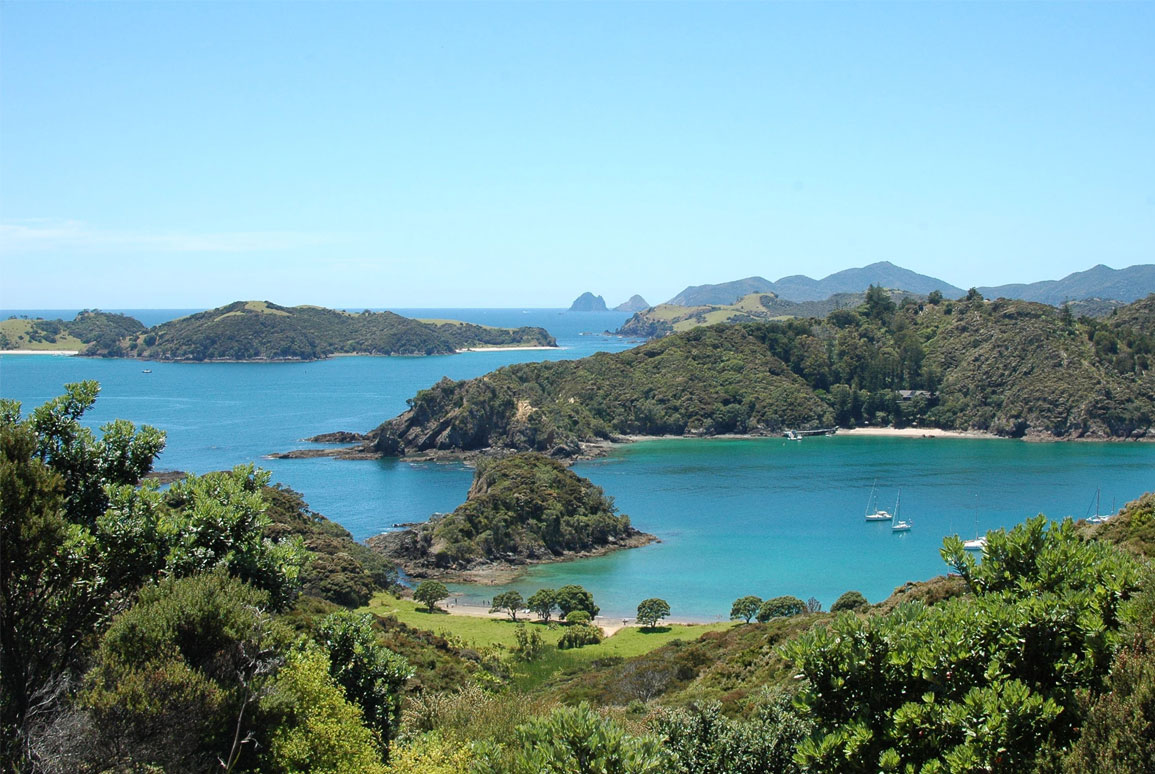Landscape-scale biosecurity management plans are an opportunity to build strategic partnerships with stakeholders, and give those involved greater impetus to work together to achieve the desired outcomes.

Predator Free Pēwhairangi Whānui is an ambitious community-driven landscape-scale Predator Free 2050 project that enables local iwi, hapū, landowners, community groups, organisations, and agencies to work collaboratively towards a Predator Free Taitokerau, by protecting and restoring tens of thousands of hectares of forest and coastal habitats in Pēwhairangi (Bay of Islands).
Boffa Miskell is supporting this unique opportunity to connect and align several existing community-led pest control programmes within Pēwhairangi towards the ambitious goal of eradicating of rats, possums, and mustelids.
Pēwhairangi already has several islands free from introduced predators which have enabled biodiversity recovery to commence providing sanctuaries for a number of threatened and at-risk species. These islands have now become an important part of the local tourism economy. Predator Free Pēwhairangi Whānui presents a unique opportunity to connect and align several existing community-led pest control programmes within Pēwhairangi, enabling and supporting groups to work together for a common goal.
Introduced pests and predators do not recognise boundaries; and strategic partnerships give those involved greater impetus to work together to achieve the desired outcomes. Landscape-scale biosecurity management plans present an opportunity to build stronger partnerships with Māori (iwi, hapū and whanau), central and local government, agencies, community organisations and residents.
The project will initially focus on working across the three main peninsulas within the Bay of Islands (Map 1): Purerua Peninsula (c.7,600 ha), Russell Peninsula (c.3,000 ha), and Cape Brett / Rākaumangamanga (c.3,000 ha) to establish a pathway to predator eradication in these sites. In addition, predators will also be suppressed in the the wider Pēwhairangi landscape (c.81,301 ha)
The project builds on the success of substantial previous work that has been undertaken by residents and landowners, local pest-control contractors, community groups, hapū, Northland Regional Council, Department of Conservation, Predator Free 2050 Ltd, Nga Whenua Rahui, Save the Kiwi, Kiwi Coast and a number of others in the Bay of Islands. These existing relationships have been critical to developing a collaborative approach and ensuring long term sustainability of the project.
Boffa Miskell recognises that strategic partnerships are a key foundation to delivering efficient and successful outcomes for these landscape scale initiatives. Our team provides expert advice and project management support to a range of landscape-scale biosecurity initiatives including this one. In addition we undertake the development of strategic and operational planning for the widespread eradication and suppression of pests (including mapping optimal locations for pest control and monitoring devices and estimating upfront and annual costs). Boffa Miskell is also in the unique position of working on multiple R&D projects in the development of new pest control tools and technologies, enabling us to work directly with these groups to obtain feedback and encourage up-take by the wider community. Our knowledge in this space also means that groups can use the most advanced tools and latest scientific findings to help them succeed with the challenges of eradication.
Like many things in the current climate, COVID-19 has had a significant impacted on the development and undertaking of the project. Face-to-face hui and wananga have been limited, which has presented significant challenges to the traditional ways of working with multiple stakeholders. This has required the project team to adapt to new ways of working online with community and project partners, such as through providing web-based surveys to gather community knowledge and opinions, online dashboards for project mapping and tracking and encouraging the uptake of online meetings.
A collaborative effort to addressing landscape scale biosecurity threats irrelevant of property, district and regional borders, is an essential approach to achieve the ambitious goal of becoming Predator Free by 2050. While technical knowledge and research is one key component for success, the involvement of people is perhaps more so. Coordination and integration of partnerships, kaitiakitanga and developing improved methods of social support is perhaps the greatest challenge. Success in these areas will set new precedents for the ways in which we can better manage our environment over large scales.

